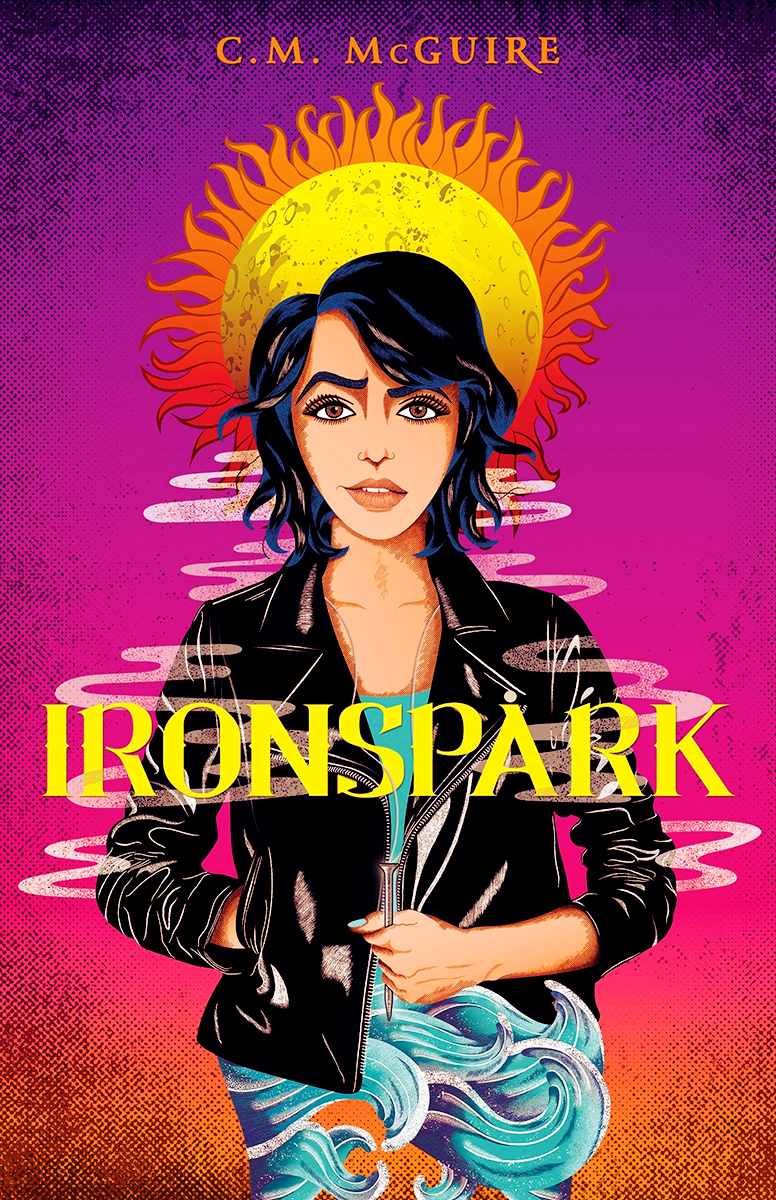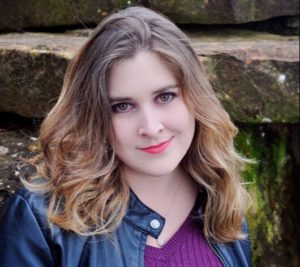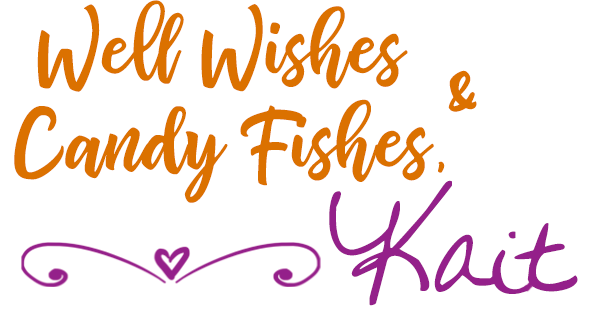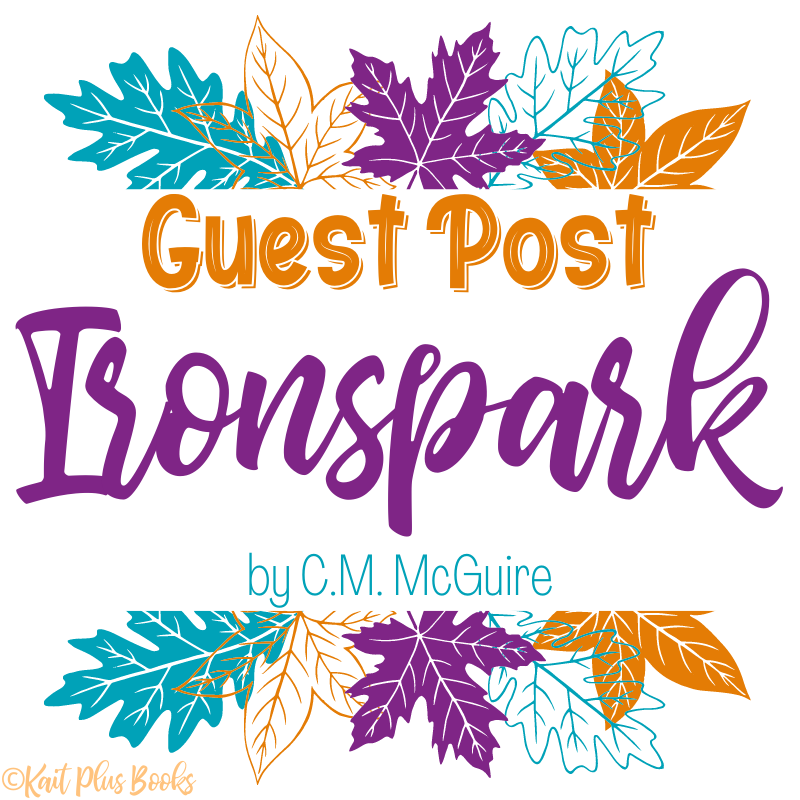Happy Monday and welcome to a very special Guest Post by C.M. McGuire, author of Ironspark! She wrote a phenomenal post about Queer Theory and I am so happy to be able to share it with you today!

 Ironspark by C.M. McGuire
Ironspark by C.M. McGuire Published on August 25, 2020 by Swoon Reads
Genres: Fantasy, YA, Queer
Pages: 336
Add to Goodreads
For the past nine years, ever since a bunch of those evil Tinkerbells abducted her mother, cursed her father, and forced her family into hiding, Bryn has devoted herself to learning everything she can about killing the Fae. Now it’s time to put those lessons to use.
Then the Court Fae finally show up, and Bryn realizes she can’t handle this on her own. Thankfully, three friends offer to help: Gwen, a kindhearted water witch; Dom, a new foster kid pulled into her world; and Jasika, a schoolmate with her own grudge against the Fae.
But trust is hard-won, and what little Bryn has gained is put to the test when she uncovers a book of Fae magic that belonged to her mother. With the Fae threat mounting every day, Bryn must choose between faith in her friends and power from a magic that could threaten her very humanity.


Queer Theory: Carving A Space For Ourselves
C.M. McGuire
I’m going to start with an anecdote about media and perception. I am from Texas. For many outside of the state, this may be met with an immediate, if small, reaction. “Why is a Texan writing about queer theory?” some might ask while others would ponder “Did she grow up riding a horse to school?”
That second one is not a joke. I was literally asked that several times during trips out of my state, and I was more than accustomed to classmates who’d moved to Texas, shocked to discover we did not all wear boots and hats, the whole state was not a desert, and horses were a luxury owned only by enthusiasts or those who needed them for work.
Why does this matter? Because the way Texans are portrayed in media teaches people what to think about us. It teaches us about the role we symbolically, if not literally, are seen to fill in the American culture as a whole.
What does that say, then, about minorities? If you observe much of the media present in the first half of the twentieth century, the mainstream would virtually have viewers believe that the disabled, the neurodivergent, or genuine people of color were strange and rare outliers in American society. Being that I do not belong to the above communities, I will instead focus on how one community to which I do belong has reacted.
The queer community holds a peculiar place in American cinema and literature, because being queer is not inherently visible. Therefore, anyone could be queer. What a marvel! Imagine watching and reading anyone and being able to prove that your hero is queer simply because there is no aggressive evidence to the contrary? Queer Theory allows queer people to read themselves into any community they like, and as such command a place in a culture that largely ignored them.
One such example of this can be found in The Great Gatsby. Did you gasp in shock or nod in understanding? If the latter, I doubt I’ll surprise you with the assertion that Nick Carraway, our fantastically passive, unreliable narrator, was absolutely gay for Gatsby. On the very first page, Nick informs us that he withholds judgement. He then proceeds to judge everyone and everything, so we cannot trust anything he says about himself. Of course a character like that, seeking to live a respectable life in a society that has outlawed homosexuality, would never admit to having queer feelings. He will instead show us through his consistent contempt of Jordan Baker, the woman he’s meant to be wooing, and his raw adoration of Jay Gatsby, the titular doomed millionaire. Gatsby is perhaps the only character who escapes Nick’s resentment. In a book critical of a society built upon excess and rigid definitions of what is respectable, of course we can read Nick as being in love with Gatsby, whether he admits it to himself or not. If you want to take it a step forward, Nick pines for Gatsby as Gatsby pines for Daisy. The theme of reaching for the impossible applies to Nick, too, if you read the novel with queer theory. The difference is that Nick never attempts to pursue his friend, leaving him heartbroken but alive.
Perhaps a more beloved subject of queer reading is the deeply tragic Bride of Frankenstein. This is because, in so many ways, Frankenstein’s monster himself is a deeply queer-coded character in the eyes of viewers. He did not ask to be born the way he was, and yet he exists in a world that inherently resents him. This is shown throughout the sequel again and again as the monster, longing for human connection, finds himself robbed of it at every corner, even when he has done nothing to deserve human scorn beyond merely existing. Unlike Nick Carraway, there is far less subtext to the similarity of the monster’s story and the commonality of the queer experience in the first half of the twentieth century, and is likely the result of the franchise’s deeply empathetic director, James Whale. In fact, the sequel doesn’t just show one man creating life without the help of a woman. Frankenstein teams up with the potentially predatory (a common trope for older queer-coded characters) Dr. Pretorius to create the bride, at the expense of his relationship with his own wife. Though the film ultimately ends with Dr. Frankenstein fleeing back to heteronormative safety and the remaining characters apparently dying, it nonetheless explores two queer themes from the time period–The trope of the predatory older gay man seducing a younger man away from a respectable life and the more lasting, human ache of a person hated simply for being what they are and longing for connection.
Throughout most of the twentieth century, the portrayal of the queer community in film, television, and fiction was largely obstructed by censorship and fear of backlash. Queerness was seen as a defect or even villainous most often in its portrayal. Even as the times changed, queer characters remained tropey side characters that showed a more harmless, if comedic or tragic, perspective. For this reason, the application of queer theory took on greater importance. It’s no coincidence that horror is particularly beloved by a community who can so easily apply their experiences to the more tragic of the creatures in cinema, but it is just one of the genres that enjoys the ultimate marriage of Queer Theory and fandom: Shipping.
It’s no secret that fans will always root for their favorite characters to get together, but as social stigmas began to deteriorate compared to the rigid structures that surrounded Frankenstein’s monster and Nick Carraway. It is fitting, in a way, that a highly progressive show inspired what is considered to be the first documented slash fanfiction. Though Gene Roddenberry did not tackle queer issues among the myriad of other boundaries that Star Trek sought to overcome, the chemistry between Shatner’s Captain Kirk and Nimoy’s Commander Spock was undeniable. This was such that, in 1974, four years after the cancellation of the series, “A Fragment in Time” was published in a dedicated fanzine, marking it as the first widely accepted slash fanfiction. Since then, the advent of the internet and platforms such as AO3 and Fanfiction.net have led to near infinite possibilities.
This does not, however, negate the need for Queer Theory.
Today, LGBTQIA+ themes are seen everywhere. It spans literature from the middle-grade Star-Crossed or Gracefully Grayson to the beloved YA Simon vs. The Homo Sapiens Agenda, Carry On, and Cinderella is Dead, to the endless adult fiction long considered niche. It has become part of our culture in Buffy the Vampire Slayer, Glee, The Magicians, and so many others. Even animation, once considered the more staunchly “child-appropriate” medium, now has queer heroes as a regular trope no different than their contemporaries.
And yet Queer Theory remains.
As long as there are classrooms where teachers are not allowed to say “gay” there will be kids who will need to work a little harder to see themselves represented in their school reading. As long as gender expectations complicate life for those who struggle to exist within the binary, the maternal coding of young Dean Winchester from Supernatural and unashamedly strong, butch Vasquez of Aliens will continue to provide meaning beyond that which the text provides.
Media is powerful. Storytelling is powerful. It can define a person and give them boundaries and understandings of a world beyond themselves. For those who find themselves on the fringes of storytelling, this can lead to an agonizing struggle for identity. Luckily, stories are also adaptable. The next time you consume seemingly heterosexual content, I dare you to recontextualize.
You can go easy. In Merchant of Venice, exactly what was Antonio’s relationship with Bassanio? Could Bow of the She-Ra reboot be trans?
Or, you could challenge yourself. Could there be more to Romeo’s relationship with Mercutio? What happens if we view Peggy Carter from Agent Carter as more than a strong, liberated woman?
You might surprise yourself.
FURTHER READING
Ackerman, Angela. “Representation in Literature: Why It’s Important & How To Handle It.” WRITERS HELPING WRITERS®, 10 Oct. 2018, writershelpingwriters.net/2018/10/representation-in-literature-why-its-important-and-how-to-handle-it/.
Bellino 10/31/2012, Damian. “Monster Diva: Why ‘Bride of Frankenstein’ Is the Gayest Monster Movie.” LOGO News, www.newnownext.com/monster-diva-why-bride-of-frankenstein-is-the-gayest-monster-movie/10/2012/#:~:text=Director%20James%20Whale. Accessed 17 Nov. 2020.
Giunta, David. “Nick Is Gay and Why Knowing This Is Essential to Reading The Great Gatsby.” Medium, 7 Aug. 2019, medium.com/carethinkcreate/nick-is-gay-and-why-knowing-this-is-essential-to-reading-the-great-gatsby-f8b76534dce9. Accessed 17 Nov. 2020.
kaila-hale-stern. “I Can’t Stop Thinking About the First Published Kirk/Spock Slash Fanfiction.” Themarysue.com, The Mary Sue, 31 Aug. 2018, www.themarysue.com/first-published-slash-fanfiction/. Accessed 17 Nov. 2020.
Ryan, Caitlin L., and Jill M. Hermann-Wilmarth. “Already on the Shelf.” Journal of Literacy Research, vol. 45, no. 2, 28 Mar. 2013, pp. 142–172, 10.1177/1086296×13479778. Accessed 17 Nov. 2020.




Goodreads | Twitter | Instagram


Who are some characters you see as queer? I haven’t checked to see if there’s a fandom for The Good Witch (Hallmark TV Show) yet, but I’ve been watching it on Netflix and Abigail and Stephanie need to get together asap. I know it’s Hallmark, so they won’t, but they need to. Right now. Let me know your thoughts in the comments and have a splendiferous day!




Leave a Reply